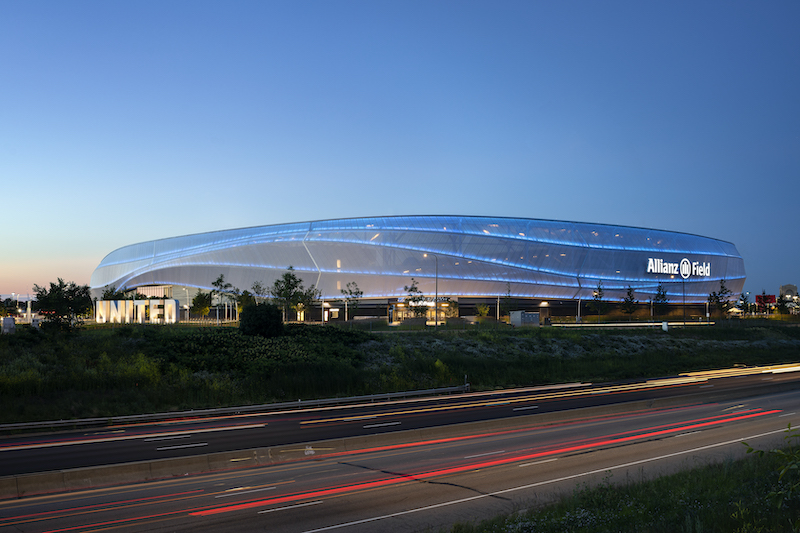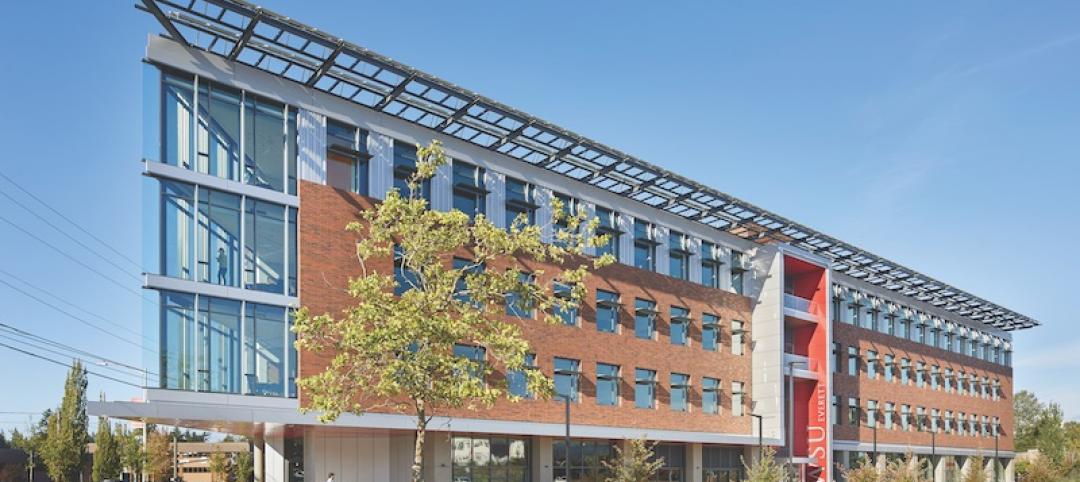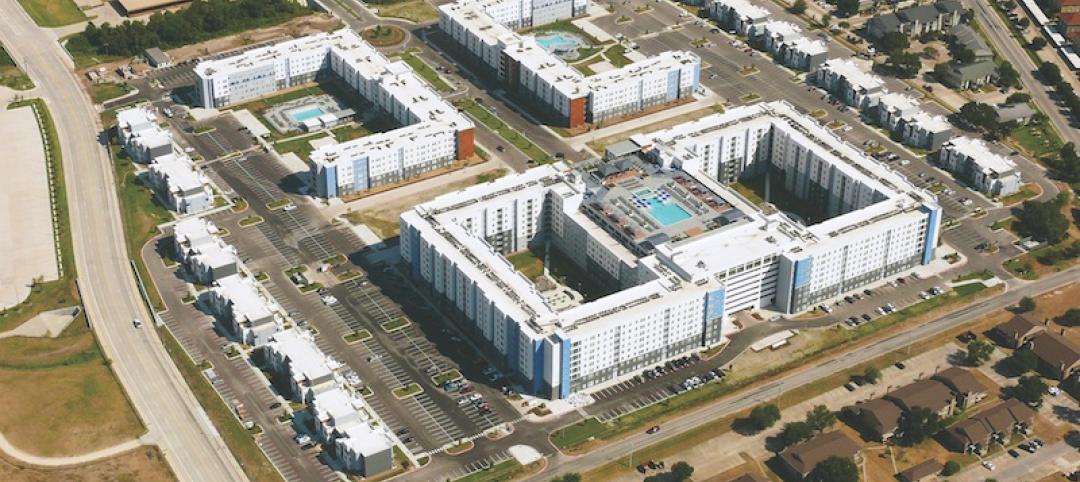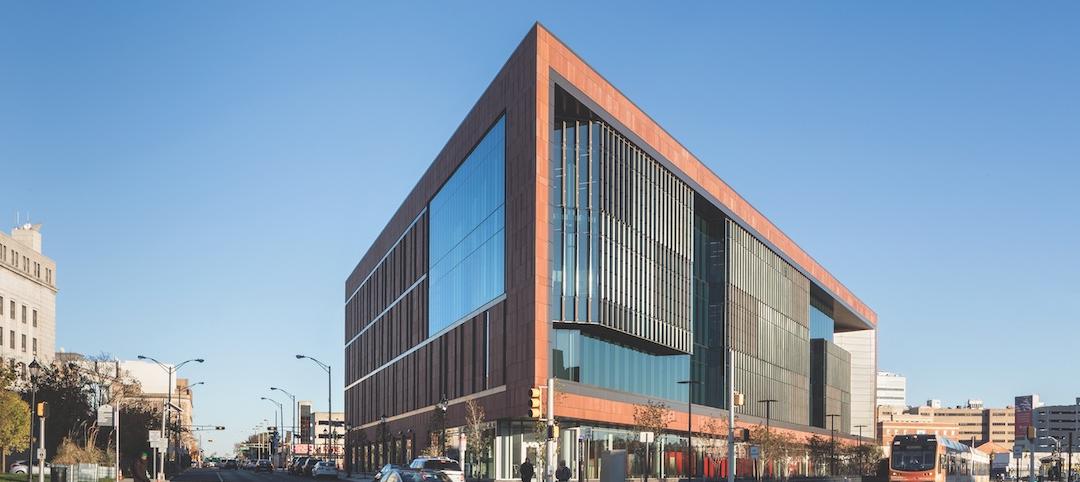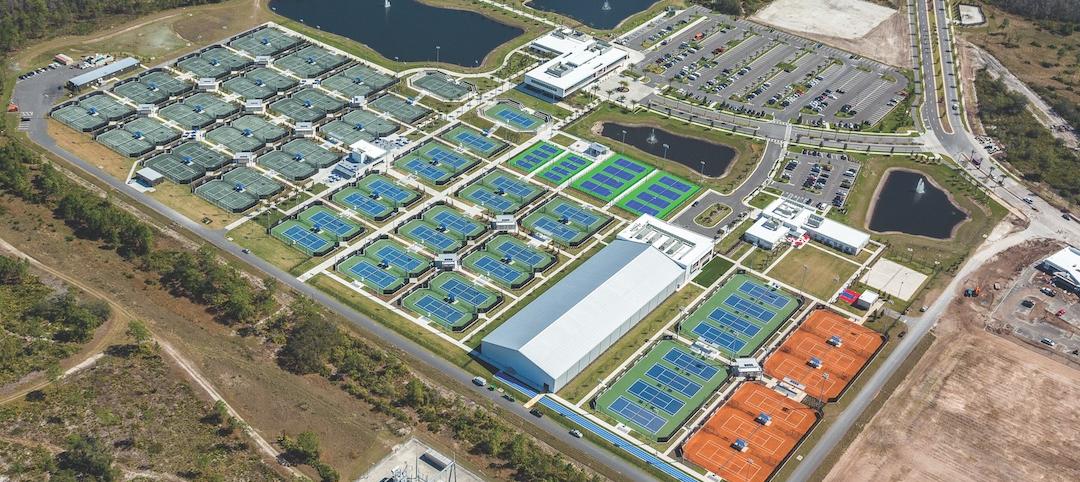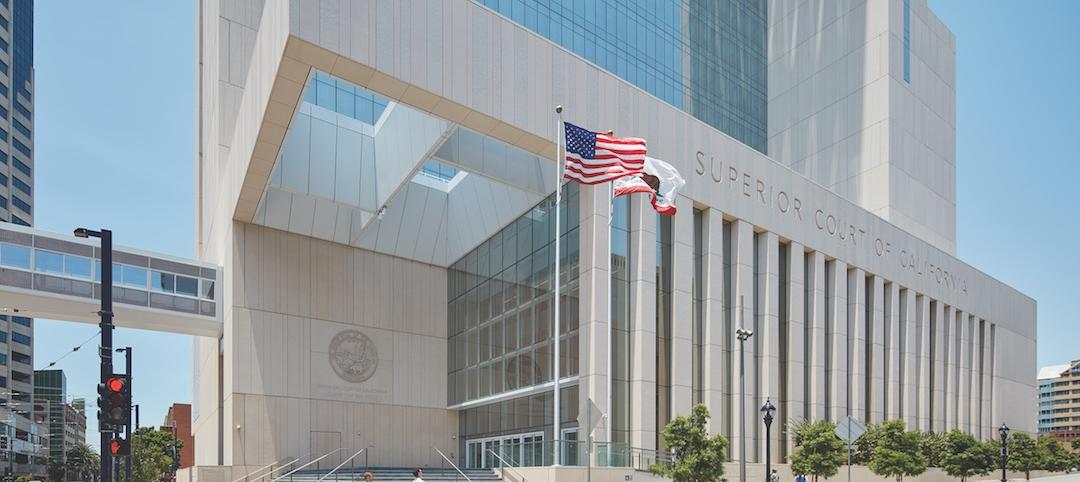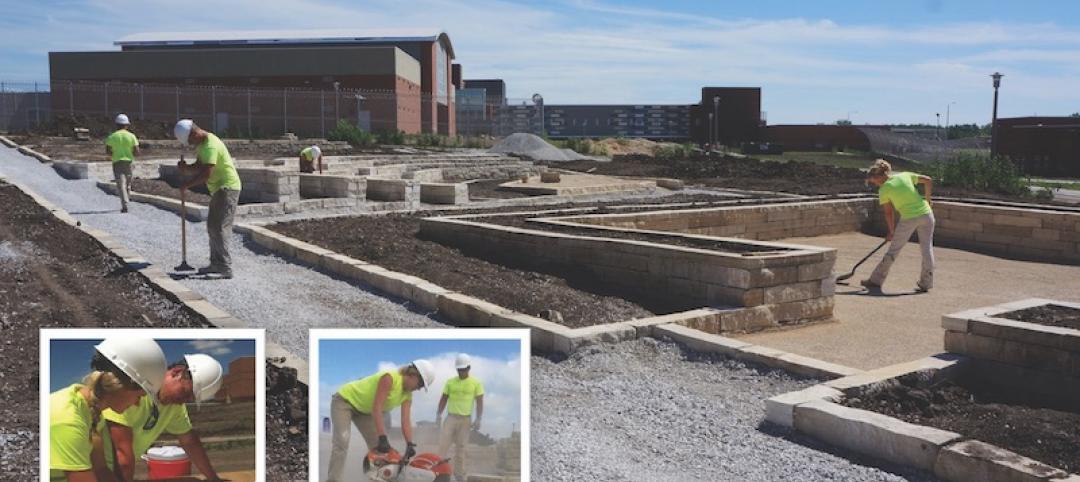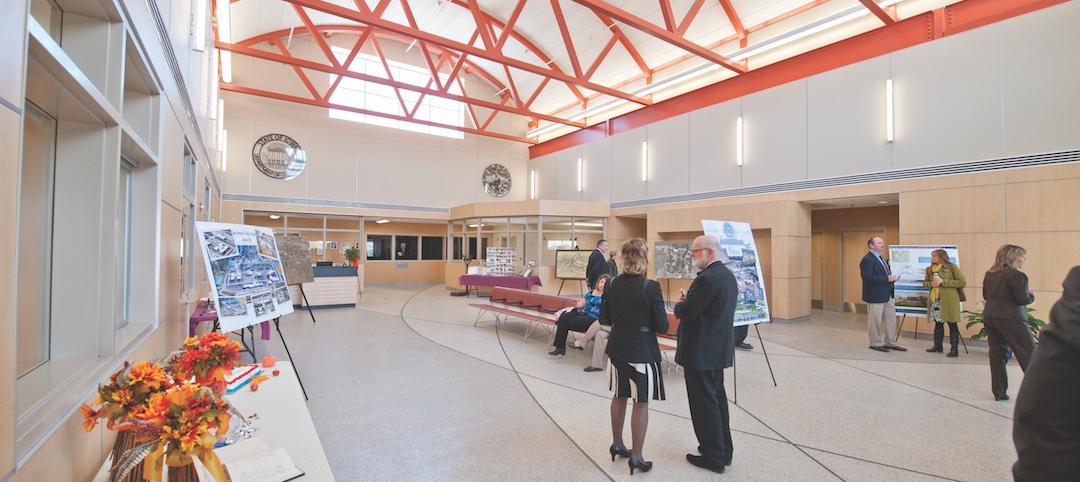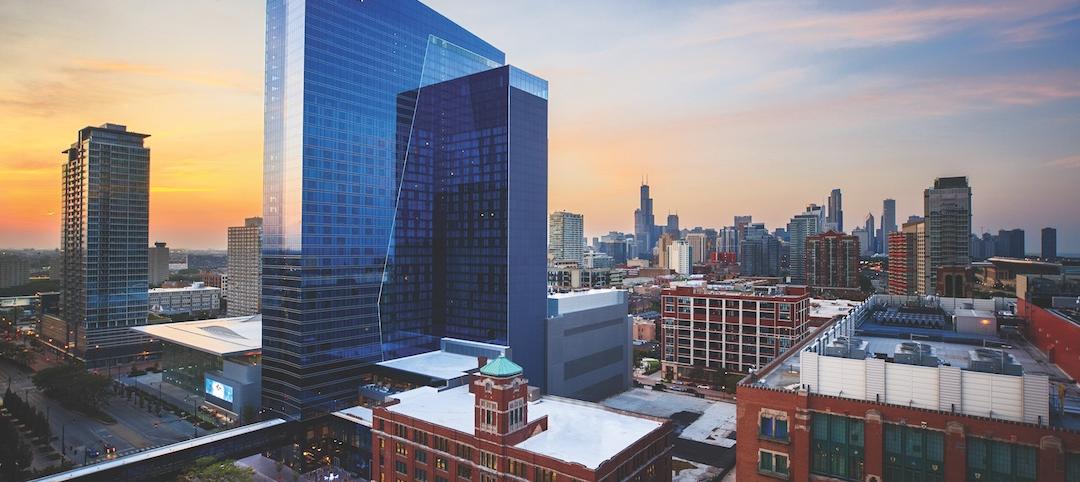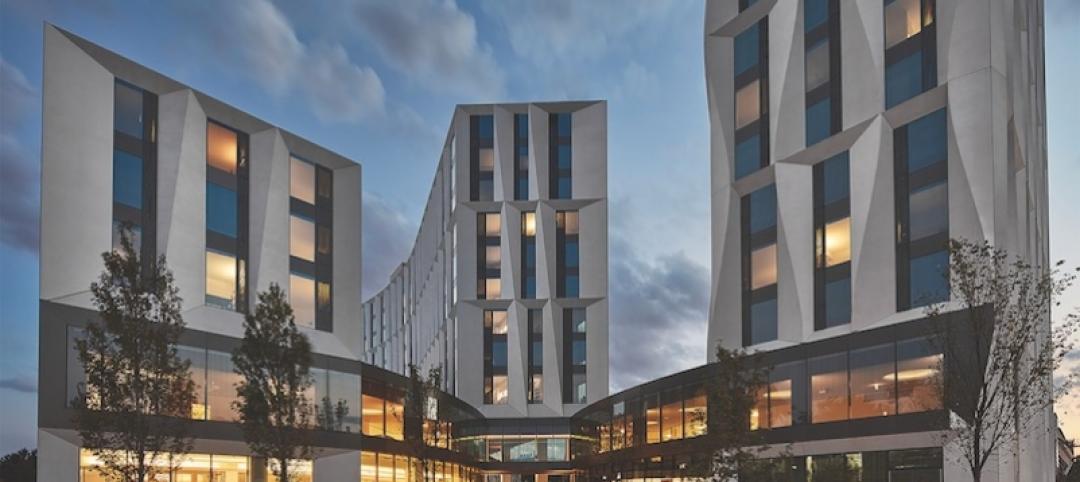Allianz Field, the new home of the Minnesota United, was designed to provide an intimate experience for fans, regardless of where they are in the stadium.
As such, the farthest seat in the stadium is only 125 feet from the pitch (which is elevated to add to the intimacy of the stadium, bringing fans even closer to the action) and a 2,930-capacity safe-standing supporters’ section features the steepest grade in MLS at 34.8 degrees, creating a “wall” of United fans and a unique home field advantage.
But Allianz Field isn’t just fan friendly on match days. In an effort to connect fans to the game year round, Allianz Field features amenities such as Brew Hall, a pub-like everyman’s club; the team store; the Great Lawn, a 28,000-sf green space for fans to gather on game days and non-game days alike; and a surrounding superblock of mixed-use development that is currently in development.
On the exterior, the stadium is wrapped in 88,000 sf of PTFE mesh wrap to create an exterior skin that is the first-of-its-kind in a professional sports venue, and can be illuminated in endless possibilities thanks to 1,700 LED lights. The use of the lightweight PTFE skin reduced the amount of steel required by an estimated 100 tons.
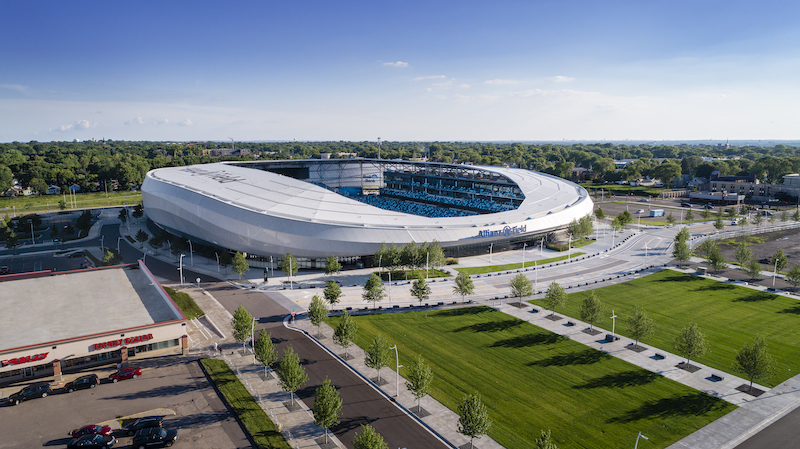 Photo: James Ewing.
Photo: James Ewing.
However, the fan-first design of Allianz Field didn’t come together without its challenges. For example, two acres of land occupied by a supermarket, bowling alley, and additional adjoining retail spaces needed to be acquired and demolished to make room for the stadium’s north. Originally scheduled for demolition in August of 2017, the date was pushed back to November to accommodate tenant lease agreements. This delay meant the construction team needed to re-sequence the project and extend work hours.
Work on concrete, mechanical, and electrical had to be accomplished in 10-hour, six-day weeks from July to November in order to get the project back on track for an early 2019 completion date. As the shopping mall was being cleared, steel crews built the stadium out along the interstate in a U-shape to start, rather than the traditional method of building in a circular formation. Prefabricated building components and systems, such as metal tresses that sit below the stadium’s canopy, helped to speed up construction, as well.
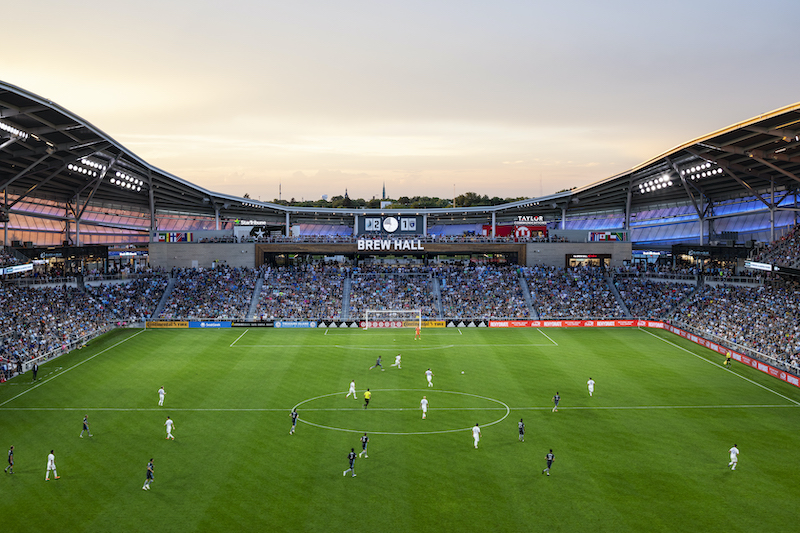 Photo: James Ewing.
Photo: James Ewing.
Further adding to the scheduled challenges were cold temperatures and high winds, which caused the job site to be shut down for several days in 2018. But the cold wasn’t the only weather-related issue. Over the course of a rainy two-month period, the project team had to filter and pump 1.2 million gallons of water off the job site. In order to overcome the scheduling issues posed by the weather, the team used the Last Planner System. The process was used to ensure that each subcontractor on site could manage their workload while also holding them responsible for the work they promised to complete. The Last Planner System proved effective as the team made up for the lost time, completing the project both on schedule and budget.
High winds were a key consideration when determining the best method of building the stadium. A stadium model with sensors and grid lines was put into a wind tunnel to assist with the design and engineering. Based on the resulting data, the build team placed 330 rock anchors 65 feet underground (no easy task considering the frozen ground and the use of water-based grout in sub-freezing temperatures) to protect the PTFE and slab-on-grade elements from wind loads.
With so many challenges threatening the project’s scheduling, the team conducted bi-weekly autonomous drone flights using 3DR Site Scan to more efficiently manage the site. The drone images were used to pull dimensions, calculate material volumes, manage on-site equipment, and determine material laydown areas. The images were also used to communicate with neighbors and adjacent businesses, which aided in minimizing disruptions. The information was shared through a cloud-based project management system that could be accessed anywhere. This kept the entire team informed in real-time.
 Photo: Alise O'brien.
Photo: Alise O'brien.
The project also employed the use of virtual MEP coordination for significant labor cost savings. By accurately coordinating the MEP systems prior to construction, the MEP trades were able to use GPS to lay out and install hanger inserts into the concrete deck framework before the concrete deck was poured. This eliminated the need for hundreds (possibly thousands) of threaded rods that would otherwise have been hand-drilled into the concrete from below to support piping, ductwork, and conduit.
The building team’s efforts not only allowed Allianz Field to achieve its goal of creating a fan-first experience, but the stadium also achieved high marks in energy efficiency, rainwater capture, bird safety, and reduced and recycled steel use.
Submitting firm, Architect of Record, Interior Architect: Populous
Owner: Minnesota United FC
Owner’s rep: Tegra Group
MEP Engineer: ME Engineers
Structural Engineer: Walter P. Moore & Associates
Civil Engineer: Loucks, Inc.
Construction Manager: Mortenson Construction
Size: 346,000 sf, 19,600 seats
Construction time: November 2017 to February 2019
Cost: NA
Delivery method: CM at Risk
Photo credit: Alise O’Brien, James Ewing
Related Stories
Building Team Awards | May 21, 2018
Campus builder: Everett University Center at Washington State University
Silver Award: WSU kicks off its new branch campus with a high-tech innovation center designed to engage students, businesses, and the community.
Building Team Awards | May 21, 2018
Promise fulfilled: Park West, Texas A&M University
Silver Award: A P3-driven team completes this mega off-campus student housing complex ahead of its fast-track schedule.
Building Team Awards | May 18, 2018
Prognosis: Positive: Rutgers University-Camden Nursing and Science Building
Gold Award: Can a new nursing school breathe life into America’s third-poorest city?
Building Team Awards | May 17, 2018
Patient priorities: Cleveland Clinic Taussig Cancer Center
Gold Award: Cleveland Clinic’s new cancer center is a transparent, collaborative hub for improved patient experiences and enhanced communication with caregivers.
Building Team Awards | May 16, 2018
Game, set, match: United States Tennis Association National Campus
Gold Award: With 100 courts and more than 260,000 sf of vertical construction, the USTA National Campus is a sanctuary for tennis enthusiasts.
Building Team Awards | May 15, 2018
High court, big impact: San Diego Central Courthouse
Gold Award: San Diego’s high-rise courthouse increases access to justice for citizens by consolidating 71 court departments.
Building Team Awards | May 14, 2018
Sweat equity marks landscaping effort
The design was grounded in therapeutic landscape and environmental psychology theory.
Building Team Awards | May 14, 2018
Rethinking prison design: Iowa Correctional Institution for Women
Platinum Award: Iowa's new women's correctional institution offers a revolutionary model for rehabilitating female inmates.
Building Team Awards | May 14, 2018
Dream delivered: McCormick Square Marriott Marquis and Wintrust Arena
Platinum Award: A daring hotel and sports development in Chicago’s South Loop aims to invigorate the city’s convention business.
Building Team Awards | Jun 14, 2017
17 projects earn BD+C's 2017 Building Team Awards
Of the 17 projects, one received a Platinum Award, six received Gold Awards, six received Silver Awards, two received Bronze Awards, and two received Honorable Mentions.


